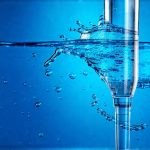The pursuit of optimal hydration is often framed as a simple equation: drink more water. Yet, this seemingly straightforward goal is frequently complicated by misinformation and misunderstandings surrounding fluid balance, leading individuals to overcorrect based on perceived deficiencies – primarily through urine color and frequency assessment. This well-intentioned effort can inadvertently disrupt the body’s delicate electrolyte balance and create a cycle of unnecessary anxiety around hydration levels. Many people fall prey to generalized recommendations that don’t account for individual factors like activity level, climate, diet, and underlying health conditions, ultimately leading to an imbalance between actual need and fluid intake.
This overcorrection phenomenon isn’t just about drinking too much water; it’s about misinterpreting signals from the body and reacting with excessive hydration based on incomplete or inaccurate information. The focus on urine as a primary indicator of hydration status can be particularly misleading, as urine color is influenced by numerous factors beyond simple fluid intake – including vitamin supplementation, food choices, and kidney function. This often results in a self-perpetuating loop where individuals drink more water to achieve a desired urine color, even if they are already adequately hydrated, potentially leading to hyponatremia (low sodium levels) or other imbalances.
Understanding the Misconceptions Around Hydration Markers
The reliance on urine as a hydration barometer is perhaps the most prevalent misconception. While pale yellow urine generally indicates good hydration, it’s far from a definitive measure. Factors like riboflavin intake (vitamin B2), found in many multivitamins and foods, can dramatically alter urine color, making it appear lighter even with adequate hydration. Conversely, concentrated urine doesn’t automatically equate to dehydration; it could simply reflect recent consumption of diuretic beverages like coffee or tea, or the natural concentration that occurs during sleep. Focusing solely on urine ignores the body’s more subtle and reliable indicators of hydration status, such as thirst sensation, energy levels, and cognitive function. You can learn more about color and clarity results in urine tests to understand these markers better.
Furthermore, many individuals operate under the assumption that a specific daily water intake is universally necessary. The “eight glasses a day” rule has become deeply ingrained in popular culture despite lacking strong scientific backing. Actual fluid needs vary considerably based on individual characteristics like body weight, activity level, climate, and overall health. A highly active person living in a hot climate will naturally require more fluids than a sedentary individual in a temperate environment. Ignoring these personalized factors can lead to both underhydration and overhydration, depending on the mismatch between recommended intake and actual needs.
Finally, there’s a widespread misunderstanding regarding beverages other than water contributing to hydration. Many underestimate the hydrating power of fruits, vegetables (which are largely composed of water), soups, and even some caffeinated beverages in moderation. While excessive caffeine can have a mild diuretic effect, it’s often overstated and doesn’t negate the overall fluid contribution from these sources – especially when balanced with adequate water intake. The key is recognizing that hydration isn’t solely about drinking plain water; it’s about maintaining an overall fluid balance through diverse sources.
The Risks of Overcorrection & Hyponatremia
Overcorrection, driven by a misinterpretation of hydration signals, can lead to several adverse effects. While mild overhydration might cause bloating, frequent urination, and a general feeling of discomfort, more severe cases can result in hyponatremia – a dangerous condition characterized by abnormally low sodium levels in the blood. Sodium is crucial for maintaining fluid balance, nerve function, and muscle contractions. When sodium levels drop too low, cells begin to swell with water, potentially leading to symptoms like nausea, headache, confusion, seizures, and even coma.
Hyponatremia is particularly concerning among endurance athletes who may drink excessive amounts of water during prolonged events without adequately replenishing electrolytes lost through sweat. However, it can also occur in individuals who simply overconsume fluids based on inaccurate hydration assessments. The risk is amplified by the fact that hyponatremia often presents with symptoms similar to dehydration, creating a vicious cycle where individuals mistakenly drink even more water to alleviate perceived deficiencies.
Beyond hyponatremia, consistently overhydrating can place unnecessary strain on the kidneys. While healthy kidneys are remarkably efficient at filtering excess fluids, chronic overhydration forces them to work harder, potentially leading to long-term damage and impaired function. This is especially concerning for individuals with pre-existing kidney conditions or those taking medications that affect renal function. Therefore, a balanced approach to hydration – one that prioritizes listening to the body’s natural signals rather than rigidly adhering to arbitrary guidelines – is essential for maintaining overall health. If you suspect your kidneys are affected, it’s important to rule out UTIs that might be contributing factors.
Recognizing True Thirst & Internal Cues
The most reliable indicator of hydration status remains thirst. The human body possesses a remarkably accurate thirst mechanism that prompts us to drink when fluid levels begin to decline. Suppressing or ignoring this natural signal in favor of scheduled drinking can actually disrupt the body’s innate ability to regulate fluid balance. Learning to differentiate between genuine thirst and habitual sipping is crucial for avoiding overcorrection. Often, what we perceive as thirst is simply a habit reinforced by marketing or societal pressure.
Pay attention to other internal cues beyond just thirst. These include: – Energy levels: Dehydration can lead to fatigue and sluggishness. – Cognitive function: Even mild dehydration can impair concentration and mental clarity. – Mouth & throat: A dry mouth is a common sign of dehydration, but it’s not always reliable as it can be influenced by other factors. – Skin turgor: While less accurate in older adults, pinching the skin on the back of your hand should see it return relatively quickly if you are well-hydrated.
It’s also important to consider environmental and activity level. Increase fluid intake proactively during periods of increased sweating or physical exertion, but avoid drinking excessively without feeling thirsty. Remember that hydration is a dynamic process – it’s not about reaching a specific daily quota but rather responding to the body’s needs in real-time.
Electrolyte Balance & Sweat Rates
Hydration isn’t just about water; it’s inextricably linked to electrolyte balance, particularly sodium, potassium, magnesium and chloride. When we sweat, we lose electrolytes along with fluids. Replacing only water without replenishing these essential minerals can exacerbate the risk of hyponatremia. This is especially crucial for endurance athletes or individuals engaging in strenuous activity in hot weather.
Understanding your individual sweat rate can help you tailor your hydration strategy more effectively. Sweat rates vary significantly based on factors like genetics, fitness level, and environmental conditions. A simple way to estimate your sweat rate is to weigh yourself before and after exercise, accounting for any fluids consumed during the workout. The difference in weight represents fluid loss through sweat.
Consider incorporating electrolyte-rich foods into your diet, such as bananas (potassium), spinach (magnesium) and pickles or sports drinks (sodium). For prolonged or intense activity, consider using an electrolyte replacement drink to replenish lost minerals. But again, avoid simply chasing a perceived deficiency with excessive fluids – focus on balanced replenishment based on actual sweat loss.
Beyond Urine: Holistic Hydration Assessment
Shifting the focus away from urine color and embracing a more holistic approach to hydration assessment is key. This involves paying attention to all of the internal cues mentioned above – thirst, energy levels, cognitive function – and integrating them with an understanding of your individual needs and circumstances. Instead of striving for pale yellow urine at all costs, prioritize feeling well-hydrated without experiencing any symptoms of overhydration or dehydration.
Monitor your body’s response to different fluid intake strategies and adjust accordingly. Experiment with incorporating hydrating foods into your diet, diversifying your beverage choices beyond plain water, and listening attentively to your thirst signal. Remember that hydration is a personalized process – there’s no one-size-fits-all solution. Holding in urine can also affect overall urinary health, so it’s best to heed the body’s signals when you feel the urge to go.
Ultimately, the goal isn’t to achieve perfect hydration based on arbitrary metrics but rather to maintain optimal fluid balance in a way that supports overall health and well-being. This requires a mindful approach, informed by self-awareness, and a rejection of misleading information that perpetuates overcorrection and unnecessary anxiety around hydration levels.





















